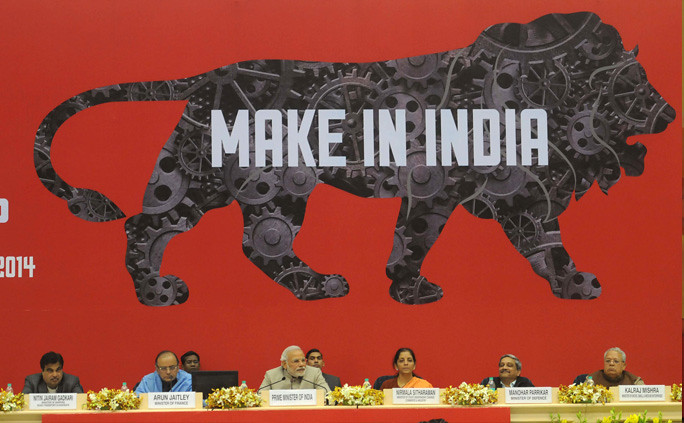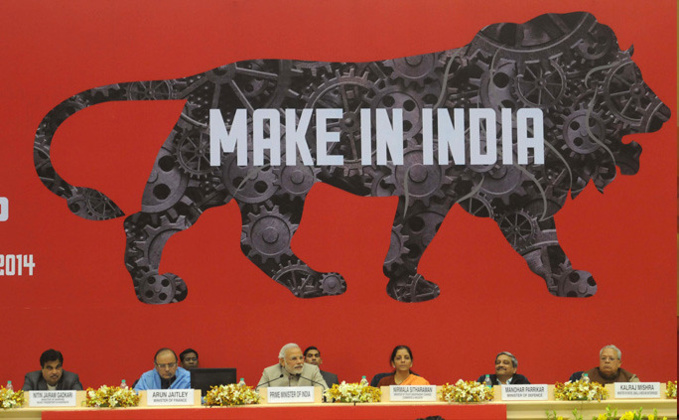The story is extremely interesting for a variety of reasons. To start, it destroys the cherished diplomacy of Narendra Modi, expressed as: “We are a special country, we stay away from the superpowers conflict (for example, the United States and China). Narendra Modi’s counselors suggested the following algorithm: India needs to clarify the boundaries in relations with the USA, stating its needs, concerns and preferences. After all, India for the United States is the only Asian counterbalance to China — and it cannot be treated like other nations.
The counterbalance to China, however, turned out very peculiar. Modi himself is reportedly very proud of this episode of his diplomacy: at the previous G20 he participated in two separate summits. One was Russia - India - China, the other was Japan - USA - India. More recently, Indian frigates sailed through the South China Sea along with warships of the United States, Japan, and the Philippines: it was assumed that America challenged China. Apparently, India was proud that the ships were Indian, not Pakistani. However, on the eve of this demonstration, the very same Indian ships entered Qingdao to celebrate the 70th anniversary of the Chinese Navy.
And then the new tariffs entered the stage, immediately after re-election of Modi. What does it mean?
Perhaps the reason lies in the fact that the democratic, liberal, globalist half of America perceives Narendra Modi as an alien. It was enough to see how relevant publications of the United States and other countries wanted Modi to lose the election because of his alleged economic failures and “ditched” ideological foundations of Indian society. But he didn’t just win the election, but was a triumphant. Once the Indian National Congress figuratively disappeared from the political scene, Modi’s party has been dominating there with its ideas of returning to the original Indian values and economic growth.
Democrats in the United States were upset, but shouldn’t have Trump and his followers be happy then? Apparently no, because the US introduced the tariffs.
In fact, the difference before and after the tariffs is not that big. The total rise in price of Indian goods on the American market is expected to be $ 5.6 billion from total Indian exports of 83.2 billion last year. The most-favoured-nation status was mainly applied to Indian textiles, jewelry and car parts.
However, current sanctions are a warning: things may get worse. Moreover, the future problems and issues can be predicted already now. The first and the most obvious problem is Iranian oil. It’s not a secret that the United States are trying to get the whole world obey these sanctions; in particular, any company that buys oil from Iran will be fined in the United States.
India received an earlier postponement of sanctions, but only for six months and only with the aim of reducing the import of Iranian oil to zero thereafter. Now there is information that India (and, by the way, China) have stopped these purchases. Indian diplomats are trying to explain that Iran is a neighbor of India and is an important partner, a participant in several investment projects, but it looks like the US won’t listen.
This is not all. The complete set of US requirements is also known: open markets for American dairy products, absence of any obstacles for medical equipment to access to India, no protectionism in the field of high technologies, and so on. In fact, the entire construction of the ties of the two countries should be turned upside down and work for America only.
How this can affect the overall situation in India? Those who tried to diagnose economic problems in the country focused only on unemployment, especially in the countryside. But its growth was against the background of world records of the economy as a whole.
This year, India is expected to overtake the UK, becoming the fifth economy of the world (and the third after China and the USA, according to another counting system).
This is the result of Modi’s first term as Prime Minister: in terms of growth, the country overtook even China and increased GDP by 50 percent. And during the second term it is planned to maintain growth at 7 percent per year.
Now imagine that a country where 7.5 million people enter the labor market each year will agree to all American demands. It will not just be a failure of Modi’s Make in India program and other initiatives, it will be a failure and a catastrophe in general.
source: reuters.com, timesofindia.indiatimes.com
The counterbalance to China, however, turned out very peculiar. Modi himself is reportedly very proud of this episode of his diplomacy: at the previous G20 he participated in two separate summits. One was Russia - India - China, the other was Japan - USA - India. More recently, Indian frigates sailed through the South China Sea along with warships of the United States, Japan, and the Philippines: it was assumed that America challenged China. Apparently, India was proud that the ships were Indian, not Pakistani. However, on the eve of this demonstration, the very same Indian ships entered Qingdao to celebrate the 70th anniversary of the Chinese Navy.
And then the new tariffs entered the stage, immediately after re-election of Modi. What does it mean?
Perhaps the reason lies in the fact that the democratic, liberal, globalist half of America perceives Narendra Modi as an alien. It was enough to see how relevant publications of the United States and other countries wanted Modi to lose the election because of his alleged economic failures and “ditched” ideological foundations of Indian society. But he didn’t just win the election, but was a triumphant. Once the Indian National Congress figuratively disappeared from the political scene, Modi’s party has been dominating there with its ideas of returning to the original Indian values and economic growth.
Democrats in the United States were upset, but shouldn’t have Trump and his followers be happy then? Apparently no, because the US introduced the tariffs.
In fact, the difference before and after the tariffs is not that big. The total rise in price of Indian goods on the American market is expected to be $ 5.6 billion from total Indian exports of 83.2 billion last year. The most-favoured-nation status was mainly applied to Indian textiles, jewelry and car parts.
However, current sanctions are a warning: things may get worse. Moreover, the future problems and issues can be predicted already now. The first and the most obvious problem is Iranian oil. It’s not a secret that the United States are trying to get the whole world obey these sanctions; in particular, any company that buys oil from Iran will be fined in the United States.
India received an earlier postponement of sanctions, but only for six months and only with the aim of reducing the import of Iranian oil to zero thereafter. Now there is information that India (and, by the way, China) have stopped these purchases. Indian diplomats are trying to explain that Iran is a neighbor of India and is an important partner, a participant in several investment projects, but it looks like the US won’t listen.
This is not all. The complete set of US requirements is also known: open markets for American dairy products, absence of any obstacles for medical equipment to access to India, no protectionism in the field of high technologies, and so on. In fact, the entire construction of the ties of the two countries should be turned upside down and work for America only.
How this can affect the overall situation in India? Those who tried to diagnose economic problems in the country focused only on unemployment, especially in the countryside. But its growth was against the background of world records of the economy as a whole.
This year, India is expected to overtake the UK, becoming the fifth economy of the world (and the third after China and the USA, according to another counting system).
This is the result of Modi’s first term as Prime Minister: in terms of growth, the country overtook even China and increased GDP by 50 percent. And during the second term it is planned to maintain growth at 7 percent per year.
Now imagine that a country where 7.5 million people enter the labor market each year will agree to all American demands. It will not just be a failure of Modi’s Make in India program and other initiatives, it will be a failure and a catastrophe in general.
source: reuters.com, timesofindia.indiatimes.com



















